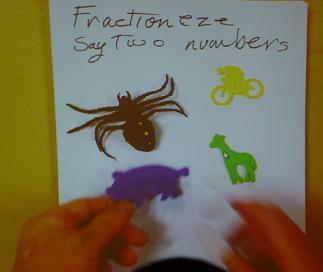Well, I’ve now had beignet, jambalaya, and gumbo, in addition to the fried alligator. Quite a unique place, this New Orleans! :o)

I began Day 4 in a session by Miraca Gross about grouping practices and their impact on gifted learners. As she discussed in her presentation, since we know that gifted learners
* learn at a much faster pace
* retain more in a more efficient way
* have a higher mental age (think in ways more like children who are older)
* and have a greater ability to connect ideas and manipulate information,
then TRULY responding to their learning characteristics means providing them with curriculum that is
* paced faster
* pitched at a higher level
* and is more complex and abstract
than the curriculum provided for average learners. If it is too slow, too easy, and too simple, gifted learners (and I would add high potential learners who haven’t been discovered yet) are robbed of the opportunity to show what they are truly capable of and to learn at the levels to which they can be stretched. I loved this quote from her: “A simplistic curriculum acts as an imposed camouflage on gifted learners.” Followed by, “We have to start acknowledging the range of achievement in the mixed ability classroom and the amount of unnecessary revision [repetition] imposed on the bright and gifted students.” And I practically cheered at this humdinger: “How do we justify an educational system that ignores competence and achievement, and utilizes chronological age as the primary, or only, factor in student placement?”
She went on to cover the advantages and disadvantages (all overcomeable, IMHO) [yes, I know that’s not really a word ;o)] of various grouping practices where gifted learners have time together with intellectual peers (such as cluster grouping, subject acceleration, self-contained classrooms, pull-out, etc.). Among the advantages, she highlighted:
* higher levels of social and academic peer support
* increased opportunity for gifted learners to work within their zone of proximal development
* increased likelihood of encountering a curriculum that is differentiated to meet their learning needs
The mini keynote that I attended today was “Bullying of and by Gifted Children and Teens” with Jean Sunde Peterson, Tom Hebert, Dan Peters, and Michelle Haj-Broussard. Many children, unfortunately, experience bullying in its various forms, including gifted youth. The presenters pointed out some factors that impact the susceptibility of gifted children to bullying, such as the fact that many gifted children are so different and quirky, some of them aren’t aware of (or don’t care about) the social consequences of being outside the social norm, their keen sense of justice can prevent them from backing off of or ignoring what they perceive as injustices, and their heightened sensitivities can magnify the effect of bullying on them.
Among the “what to do” suggestions given for the helping adults in the lives of children experiencing bullying were the following (and these certainly are good advice for helping a child of any ability level who is being bullied):
* Make sure they have experiences where they feel liked and valued
* Provide a consistent presence in the child’s life
* Offer them strategies and tools for dealing with bullying
* Assist them in their quest to find purpose and meaning in life
* Focus on their strengths
* Validate their input
* Consider a new environment
* “Help them focus on the marathon of life”
You might like to read this summary of some of the research on bullying and gifted children that was referenced in the presentation.
In the afternoon, I was part of a packed room that thoroughly enjoyed the humor and mathematical insights of the internationally well-loved Rachel McAnallen, a.k.a. Ms. Math (or now, Dr. Ms. Math, as she recently earned her PhD in Gifted Education at the age of 75! You can read her dissertation on math anxiety in elementary teachers here.) I’ve seen her present many times, but had never seen her do a session on fractions, so I was curious what her angle on that would be. She talked about teaching children “fractioneze,” or the language of fractions. Here she demonstrates a way to teach accurate language for parts of a group, the beginnings of developing the concept of parts of a whole:

“One out of four is on wheels.” “One out of four is black.” “Two out of four have four legs.” “Zero out of four are red.” “Four out of four are not red.” I encourage you to check out her thorough description of the whole lesson and process! She has it written so you can apply/adapt it to any grade level.
You can access other descriptions of her additional strategies for teaching fractions on her website. You can also access many of her other insightful, conceptual strategies for all grade levels there, too.
Well, I’m off to begin Day 5, followed by a long flight home. I hope to cover the rest of Days 3 and 4 later.